Depending on conditions snow can seem to be a magic wonderland for birds to frolic in or be a dire threat to their survival.
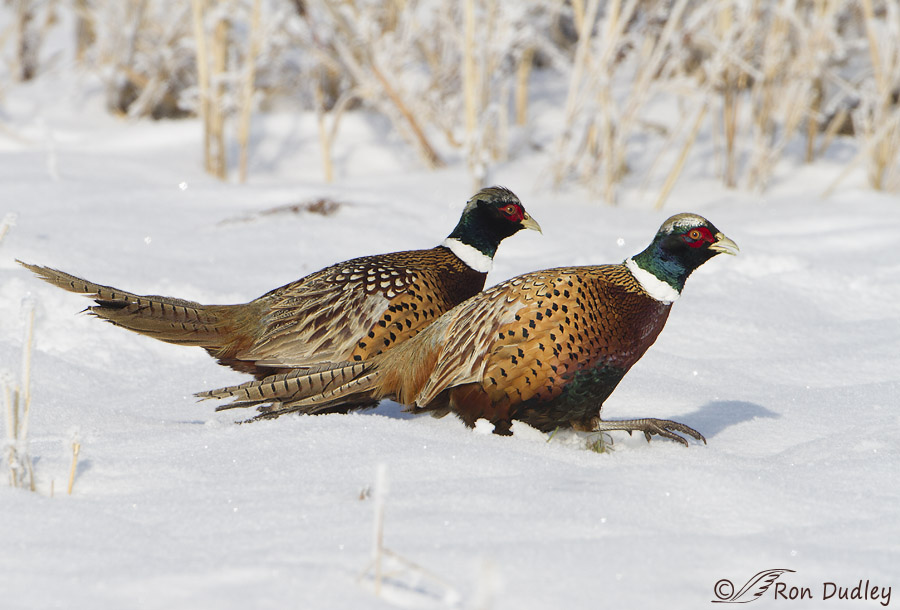
1/1250, f/9, ISO 500, Canon 7D, Canon EF500mm f/4L IS USM +1.4 tc, not baited, set up or called in
When conditions are sunny and not too cold many birds appear to take snow in stride and almost seem to enjoy it. Ring-necked Pheasants are well adapted to snow and cold (they do particularly well in the Dakotas) and can be relatively easy to spot and photograph with the brilliant colors of the males against the white background. I was happy to get both of these birds sharp as they ran through the snow.
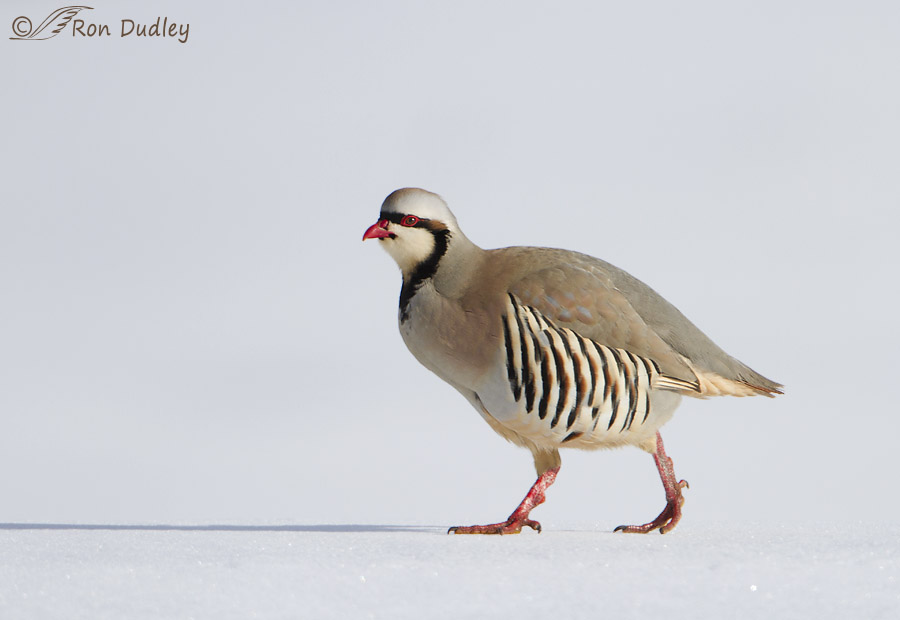
1/2500, f/6.3, ISO 400, Canon 7D, Canon EF500mm f/4L IS USM +1.4 tc, not baited, set up or called in
Here the featureless and slightly crusted snow that the Chukar is walking on seems benign enough but that can be far from the truth.
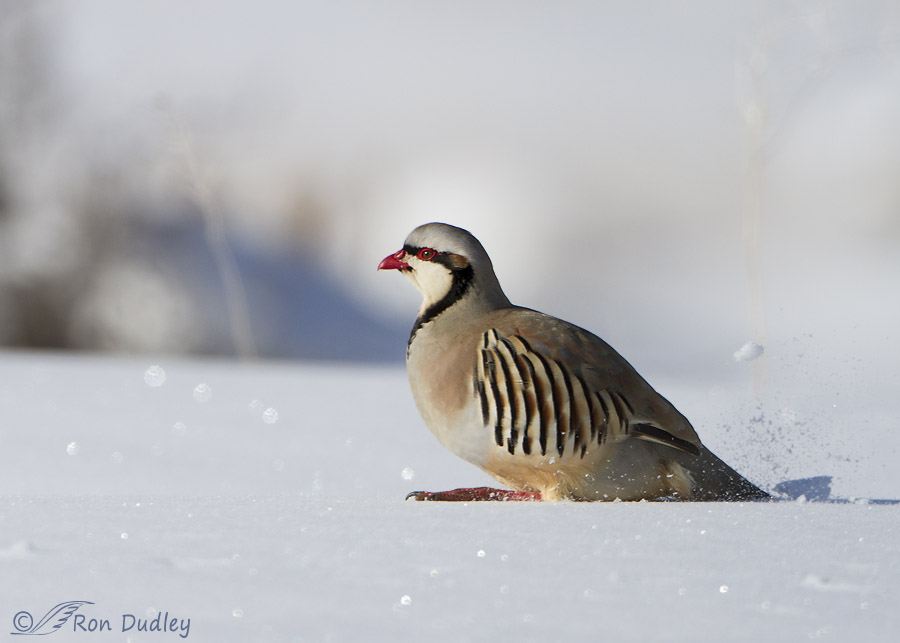
1/2500, f/6.3, ISO 400, Canon 7D, Canon EF500mm f/4L IS USM +1.4 tc, not baited, set up or called in
They often fall through the snow surface and it’s a real struggle to make any headway. Chukars seldom fly and they must range far and wide to obtain enough food, especially in these conditions.
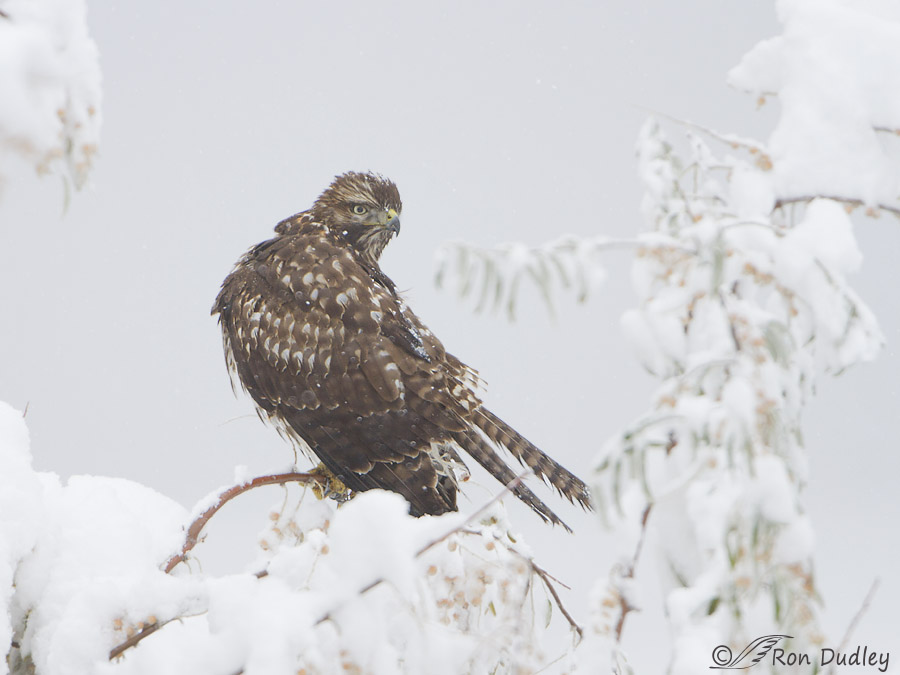
1/800, f/5.6, ISO 640, Canon 7D, Canon EF500mm f/4L IS USM +1.4 tc, not baited, set up or called in
I worried about this juvenile Red-tailed Hawk. A heavy, wet snow had been falling all night and into the morning (it’s still snowing as you can see by the flakes in front of the bird). The hawk was wet and its feathers were a mess. It was attempting to preen but in these conditions it was largely a losing proposition. Temperatures often drop precipitously at night and when that happens to a wet bird its outlook can be bleak.
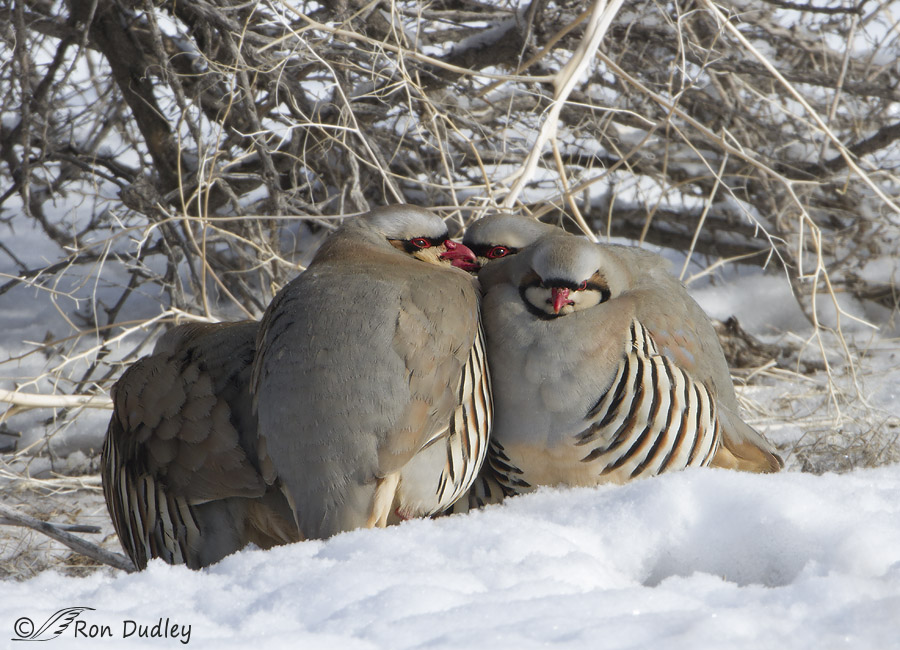
1/200, f/18, ISO 500, Canon 7D, Canon EF500mm f/4L IS USM +1.4 tc, not baited, set up or called in
Here you see a survival strategy used by some birds. These Chukars were huddled together at the base of a bush where the snow was thin in an effort to conserve heat in the brisk, freezing breeze. There was lots of snow which makes it difficult for them to find food. To do so they plunge their heads through the snow in an attempt to reach the surface of the ground where there may be seeds. This process leaves holes in the snow, one of which can be seen at lower right.
It isn’t easy being a bird.
Ron


these are so lovely!!
I don’t envy a bird’s life in the winter (though based on the amount of sunflower seeds I go through, the birds at my feeder seem to have it pretty good!), saw a Blue Heron looking mighty miserable standing on a frozen pond this afternoon.
Really like the huddling Chukars!
My heart goes out to that poor Red Tail Hawk. When I see a picture like that I have to stop and think about how difficult a bird’s life is, something I don’t do enough. Thanks for the beautiful photos.
Considering what they endure it is a miracle that any of them survive. Glorious images, and a telling reminder. Thank you.
SO beautiful. Love every one of them! Love them huddled all together. It gave me a smile. Thank you.
Thank you, Tin.
Your images are just stunning–and made the more compelling by the compassion you express for the conditions they often must endure .They aren’t simply objects of beauty , and I appreciate that you
remind your audience of the reality of their lives.
I appreciate the kind words, Kris.
Educational as well as beautiful. Thank you.
Thanks, Arwen.
Your photos are amazing! And thank you for the information on the birds as well. It’s much appreciated.
You’re very welcome, Sue. Thank you.
Fabulous photos of birds in snow. I always look forward to your daily posts, often I find them simply thrilling, as I do these. I appreciate your explanations as I am beginning to learn more about birds and photography. Thank you so much
I’m delighted to know that my images are helpful to you in both venues, Eloise. Thanks.
Ron, it is helpful to see these lovely birds in such bleak surroundings. It’s all too easy to romanticize their lot – ‘free as a bird’ – when every moment is really a gift, and death can come at any time. Thanks for these beautiful pictures.
Well said, Alison. Thank you.
Beautiful series. I now live in Gloucestershire county in England. Pheasants and red legged partridges are raised by the thousands and released for private hunts on the large estates here in the Cotswolds. I don’t like the practice but it does not diminish my appreciation of the beauty of these birds.
Thanks, Wendy. I don’t know if these pheasants are wild or have been released – there’s some of both in the area. The Chukars are wild.